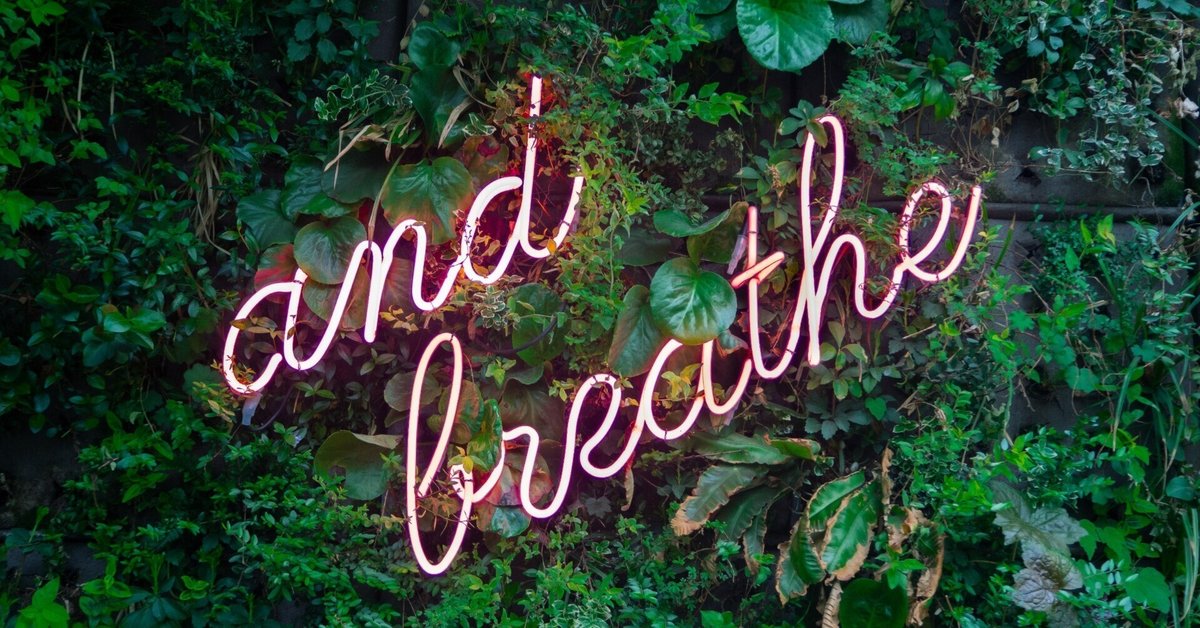
Breathe. Exhale. Focus on what you can control.
Notice your breathing
Are you breathing now? Were you perhaps holding your breath?
When we are stressed, we take short breaths with our shoulders hunched. This shallow breathing is not good for our body, but worse is when we unconsciously stop breathing. Because it is automatic, breathing is the most underestimated of all the physical actions we perform. Yet it is the most vital of all.
In an emergency, when panic sets in, your breathing becomes shallower. If you don't breathe right, your body doesn't get enough oxygen. Without enough oxygen, your brain, organs, nerves and muscles won't work as they should.
When I was taking swimming lessons in my teens, I often got cramps in my legs. My coach said it was because I was breathing wrong while swimming and not getting enough oxygen into my body. In my 30s, I was prone to getting stomach cramps quite often. This was exactly when I was feeling the stress and breathing on my shoulders. These experiences show that cramps were my body's way of telling me that I didn't breathe properly.
How to breathe deeply
It's easy to say "Take a deep breath!" but I've seen many people struggling to swiftly breathe deeply. If you're feeling stressed and panicky, it's likely that your airways and lungs are also tense. They don't expand them right away. In these situations, it's best to focus on exhaling rather than inhaling.
Relax your body
Move your neck and shoulders. Rotate your hips. Give your body a shake. Why not jump and dance?
Exhale
Once you feel a bit relaxed and stretched, forcefully exhale. Breathe out completely, using up all the oxygen in your body. Imagine you're letting all the air out from the top of your head, down your neck, across your shoulders, and from your lungs, stomach and toes.
Inhale
As you let all the air out, you'll naturally want to breathe in oxygen, so just do that as your body needs. Just go with it and listen to your body to see how it wants to take in the air. As you inhale, try to feel the air reaching your stomach. Repeat this, focusing on exhaling a few times.
The next few times, imagine exhaling emotions and thoughts from every corner of the body. The next few times, intend to breathe in only clean, delicious and sparkling air.
The one thing we can control is our breathing
When I was dealing with a lot of stomach cramps, I realised that it wasn't possible to observe or even touch my internal organs in the same way that you can with external injuries. They're all controlled by the autonomic nervous system. When everything is running as it should, we don't notice or think about it much. But when something goes wrong with it, which is often diagnosed as dysautonomia, we panic and try to find some drugs to fix the problem. It can be tricky to find the right solution and feel like we're at a loss as to what to do about it.
When I couldn't find a solution and felt stuck, I found that many books by Zen and yoga masters basically say the same thing: "There is one thing you can control. That is breathing."
Our unconscious breathing of every moment is actually communicating our condition to all over our body parts, including brain, organs, muscles, skin, etc. Shallow breathing with less oxygen due to stress delivers the signals of stress throughout our body. If oxygen is not sent properly to the brain, our thoughts and feelings will go haywire. If oxygen is not sent to the heart and stomach, they will not function properly.
So the only thing we can 'consciously do' and 'control' is to keep sending deep, fresh air to our body. Even when stress and panic make it difficult to do so, it is our responsibility to take conscious control of our breathing and to keep sending deep breaths to our brain and organs. When your brain and body receive oxygen and know that there is plenty of oxygen around them and that there is no need to panic, and that they can soothe themselves and try to get back on their feet.
Image by Max van den Oetelaar, Unsplash
